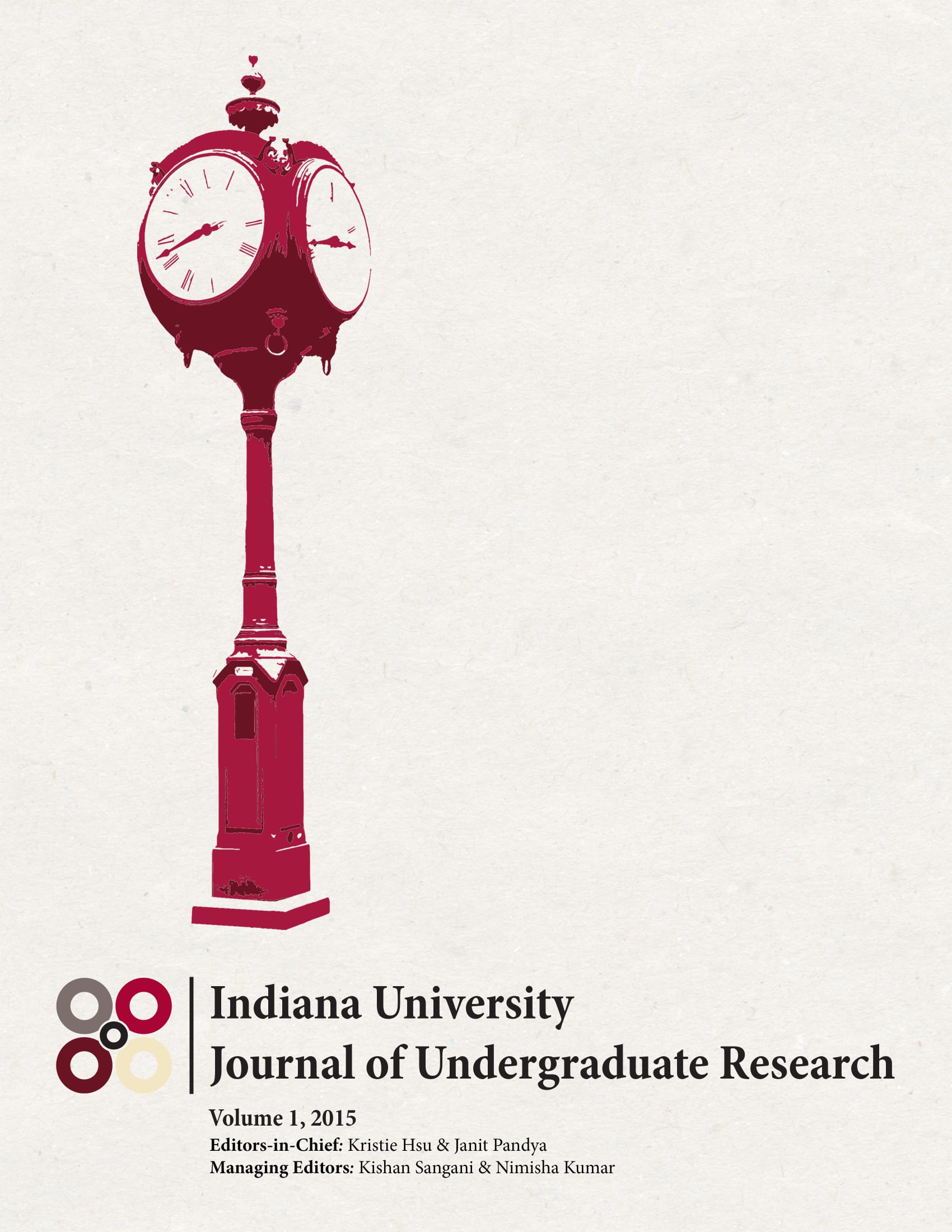Weight-Related Lifestyle Behaviors and Attitudes in High School and College Students
Main Article Content
Abstract
Obesity trends show that the prevalence of obesity is increasing drastically and that younger age groups are increasingly at risk. The purposes of this study were to determine if there are discernable differences between behaviors of high school students and college students and also between college students of normal weight and college students who are overweight/obese. This IRB-approved study surveyed approximately 80 high school seniors and 80 Indiana University students of various class standings. The study was developed from a survey published in 1989 in Seventeen Magazine called “May Obesity Survey.” The questions collected data related to age, BMI, and lifestyle, including physical activity levels, stress, and behavior. The software SPSS was used to perform statistical analysis. The findings showed a positive correlation (p<.001, r=.616) between students’ self-reported weight category and actual BMI (calculated by reported height and weight). College students with healthy BMIs exercise 4-6 times/week, while overweight and obese students exercise 1-3 times/week Χ2 (3) =8.95, p<.05. In addition, college students of normal weight are three times more likely to perform exercises of moderate to high intensity, such as strength training. A significant positive correlation was also found between the number of hours college students spent during weekends watching television, using a computer, or playing video games and body weight Χ2 (3) =8.75, p< .05. Equal numbers of normal weight and overweight/obese college students report desire to improve their health. One of the primary findings indicates that students are either not aware of their true weight status or willing to admit it to others. Therefore, increased education about the BMI index and consequences of excess weight may be the first step in fighting college obesity.
Downloads
Article Details
Authors who publish with this journal agree to the following terms:
- Ownership of the copyright shall remain with the Author, subject to IUJUR’s use and the rights granted by the Creative Commons license assigned by the Author. A Creative Commons Attribution-NonCommercial 4.0 International (CC BY-NC 4.0) license will be applied to the published work unless otherwise indicated in the Student Author Contract. The CC BY-NC 4.0 license (https://creativecommons.org/licenses/by-nc/4.0/) lets others remix, tweak, and build upon the published Work non-commercially, and although the new works must also acknowledge the original IUJUR publication and be noncommercial, they don’t have to license their derivative works on the same terms.Authors are able to enter into separate, additional contractual arrangements for the non-exclusive distribution of the journal's published version of the work (e.g., post it to an institutional repository or publish it in a book), with an acknowledgement of its initial publication in this journal.
- Authors are permitted and encouraged to post their work online (e.g., in institutional repositories or on their website) prior to and during the submission process, as it can lead to productive exchanges, as well as earlier and greater citation of published work (See The Effect of Open Access).
References
Economic Costs. (2012, October 20). Retrieved May 12, 2015, from http://www.hsph.harvard.edu/obesity-prevention-source/obesity-consequences/economic/
Huber, L. R. B. (2007). Validity of self-reported height and weight in women of reproductive age. Maternal and Child Health Journal, 11(2), 137-144. doi: 10.1007/s10995-006-0157-0
National League of Cities Institute for Youth, Education & Families. (n.d.). Healthy communities for a healthy future economic costs of obesity comments. Retrieved May 22, 2014, from http://www.healthycommunitieshealthyfuture.org/learn-the-facts/economic-costs-of-obesity/
Obesity and Overweight (2014, May 14). Centers for Disease Control and Prevention. Retrieved May 22, 2014, from http://www.cdc.gov/nchs/fastats/overwt.htm

